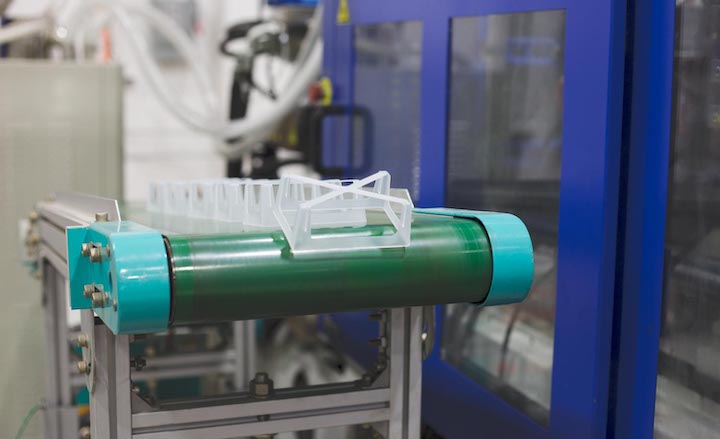- Home
- About Us
- Blog
- Capabilities
Sub-Processes
Plastic Materials
Processes Available
Post Processing
- Contact Us
| Lifecycle | Lead Time | Resolution | Infill | Materials |
|---|---|---|---|---|
| Bridge production (10 – 1,000 units) Late stage functional prototyping | As fast as 3 days | 0.08 mm | 100% (solid) | Nylon |
We can produce parts in just one day thanks to digital manufacturing methods according to our customers’ needs.
Min Wall Thickness | Min End Mill Size | Min Drill Size | Max Part Size | Undercuts | Radii : Depth |
|---|---|---|---|---|---|
0.5 mm | 0.8 mm (0.03 in) | 0.5 mm (0.02 in) | 1200 x 500 x 152 mm [x,y,z] (mill) 152 x 394 mm [d,h] (lathe) | Square profile, full radius, dovetail profiles | Depth must not exceed 12x drill bit diameter. For end mills, depth must not exceed 10x tool diameter. |
Additional Design for Manufacturing Tips
Cost Saving Tips
Name | Applicable Materials | Colors | Applications | Texture |
|---|---|---|---|---|
Vapor Smoothing | PA 12 Glass Beads | While vapor smoothing itself does not apply a color to the part, it makes the colors of the part more vibrant — so black dyed parts become a deeper, glossier black. Note that gray (raw) MJF parts will turn a near-black if vapor smoothed, as the gray surface melts into the black interior of the part during the process | Enhanced cosmetic appearance, improved mechanical properties | Smooth and glossy |
Multi Jet Fusion, or MJF, is a cutting edge 3D printing technology from HP that helps companies accelerate time to market with production-grade 3D printing.
The technology works by spreading out a fine layer of powder, depositing a fluid in the desired locations, and then fusing those areas. The raw powder acts as support for the parts within the build bed. Once the parts are complete, they are cooled, cleaned, and media blasted for a smoother surface finish.
MJF is ideal for bridge production quantities in the hundreds, given that the daily output is comparatively higher than other 3D printing technologies. It’s also great for functional testing and form/fit validation because of its high resolution and excellent tensile strength and heat deflection. It can even produce end-use parts and is a great transition into injection molding, since MJF parts have homogenous mechanical properties.
MJF is a versatile process leveraged by a broad range of industries including healthcare, automotive, and consumer electronics. Some common applications include prosthetics, aerospace camera enclosures, dental molds, and automotive component molds.

Stereolithography (SLA), the technology used to produce them, supports the creation of plastic parts with tight tolerances, intricate geometries, and smooth surface finishes. And parts printed using SLA stand out because of their exceptional accuracy, resolution, and level of detail. One key advantage of SLA is its ability to achieve finishes that are both highly […]

Are you ready to scale up from 3D printing to injection molding? Then it’s time to tailor your part design for a process that uses metal tooling and has its own unique design requirements. This article begins with some injection molding basics and then explains how to optimize your part design to reduce tooling costs […]